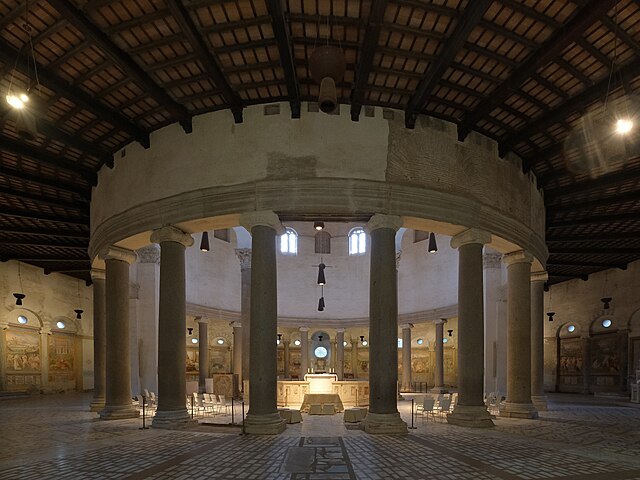A martyrium (Latin) or martyrion (Greek), sometimes anglicized martyry, is a church or shrine built over the tomb of a Christian martyr. It is associated with a specific architectural form, centered on a central element and thus built on a central plan, that is, of a circular or sometimes octagonal or cruciform shape.
The largely 5th-century interior of Santo Stefano Rotondo in Rome
In Christianity, the translation of relics is the removal of holy objects from one locality to another ; usually only the movement of the remains of the saint's body would be treated so formally, with secondary relics such as items of clothing treated with less ceremony. Translations could be accompanied by many acts, including all-night vigils and processions, often involving entire communities.
Depiction of St. Corbinian's relics being moved to Freising from Merano. From a panel in the crypt of Freising Cathedral.
Translation of the relics of St. Gregory to the monastery of Petershausen.
The Honorable Head of Venerable Macarius (in the golden reliquary held by Archbishop Georgy of Nizhny Novgorod and Arzamas) visits the city of Kstovo during its translation from Nizhny Novgorod's Pechersky Ascension Monastery to Makaryev Monastery
17th-century icon of the Translation of the Relics of St. Nicholas of Myra, from Myra in Asia Minor to Bari, Italy in 1087 (Historic Museum in Sanok, Poland).





